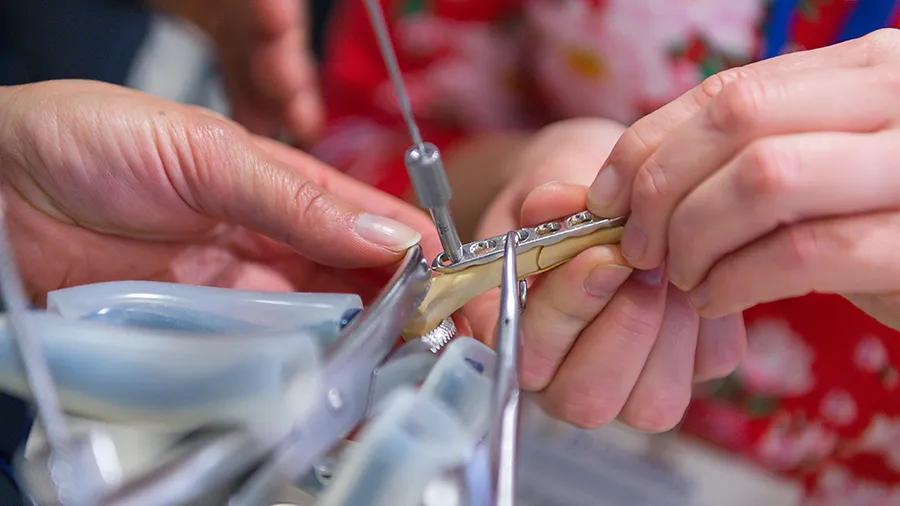Dynamic cross pinning and transcondylar lag screw
1. Principles
Anatomic reconstruction of the joint surface is essential, and it should be performed prior to fixation of the condyles to metaphysis.
Interfragmentary compression is achieved with a lag screw for anatomical reduction of the articular fracture.
Note: This technique does not provide rigid stability. Ideally, it should be used in patients that will heal quickly, or when other techniques are not possible.
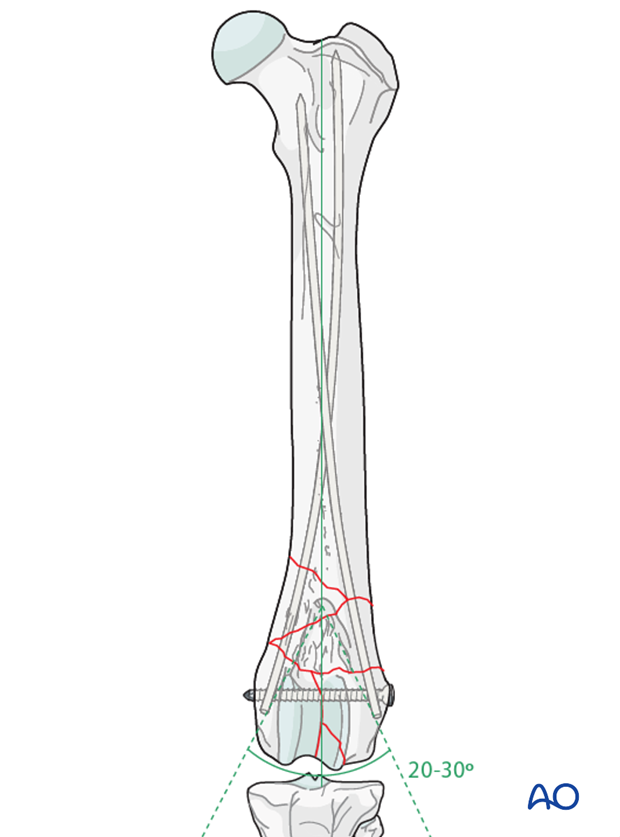
2. Positioning and approach
This procedure is performed with the patient placed in dorsal recumbency
One of the following approaches is utilized:
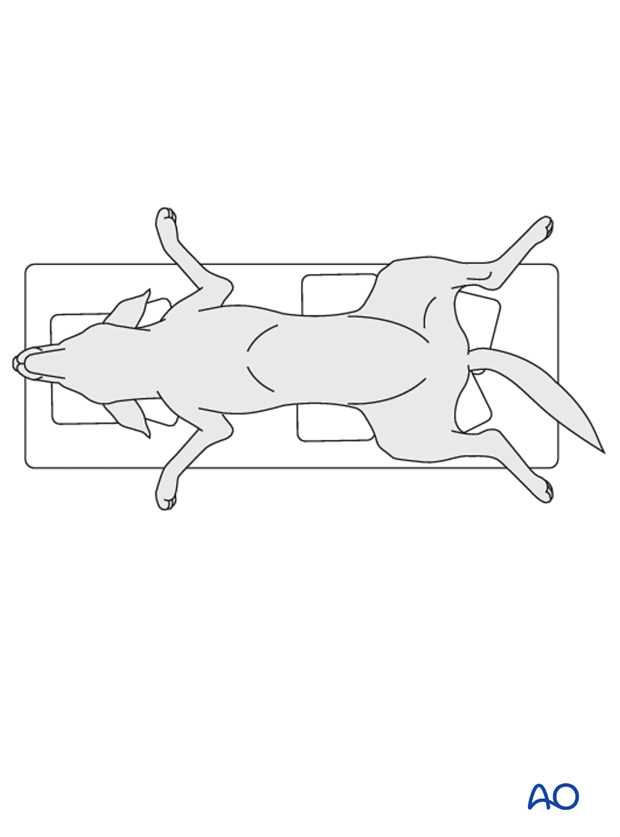
3. Surgical technique
Reduction and stabilization of the femoral condyles
The articular fracture of the condyles is reduced with pointed reduction forceps. Anatomic reduction is essential in all cases.
Note: Bone in juvenile patients is very soft. Care must be taken not to damage it during reduction.
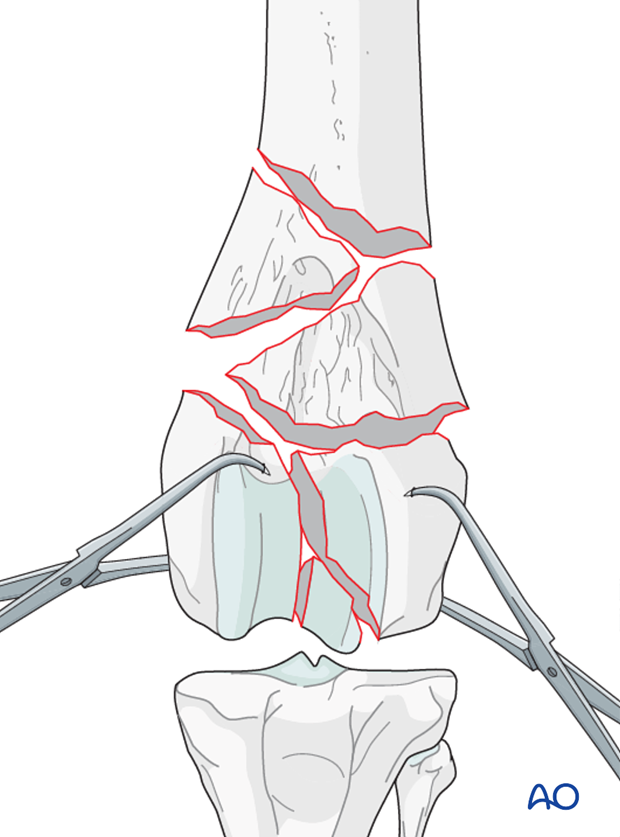
Screw insertion
Stabilization is achieved with inserting a screw in lag fashion across the condyles perpendicular to the fracture plane. Frequently the screw is placed in lateral to medial direction, starting at the level of the epicondyle.
Note: Care should be taken not to penetrate the condylar fossa to avoid damage to the cruciate ligaments with the screw.
A detailed description of "Lag screw fixation" can be found here.
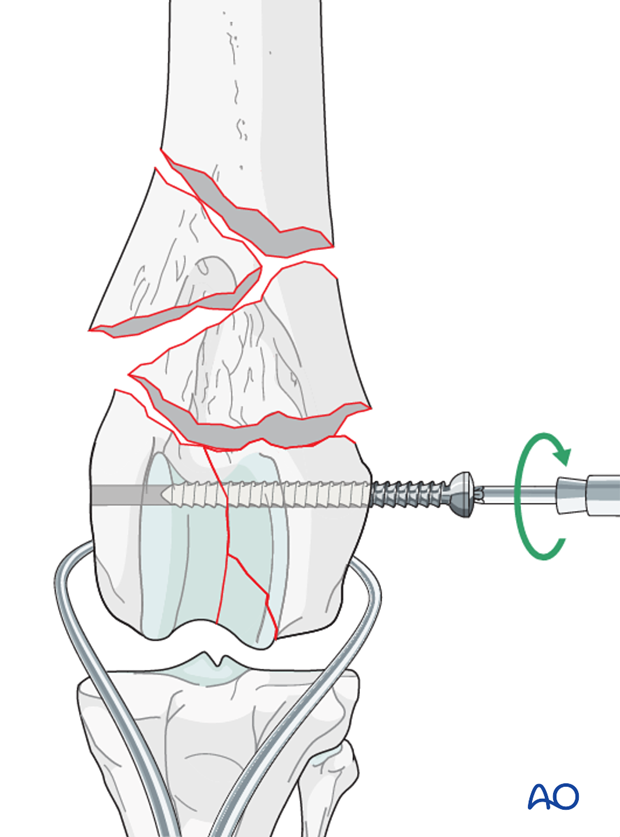
Definitive stabilization of the smaller fragments of the condyles may be performed using lag screws or K-wires.
Note: If the screw head or K-wire is positioned in the articular surface they must be countersunk to avoid interference with intraarticular structures.
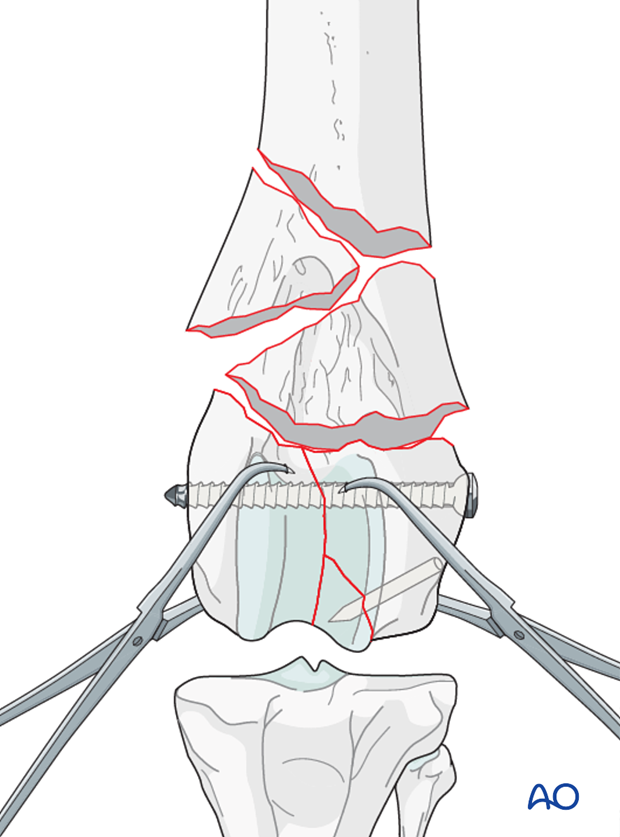
Reduction and stabilization of the condyles to the metaphysis
The reconstructed femoral condyles are carefully reduced to the metaphysis with pointed reduction forceps. Anatomic reduction is desired in all cases. Under-reduction of the fracture should be avoided as it is less stable, and the cranial aspect of the metaphysis may interfere with the gliding of the patella in the trochlear groove.
Note: Bone in juvenile patients is very soft. Care must be taken not to damage it during reduction.
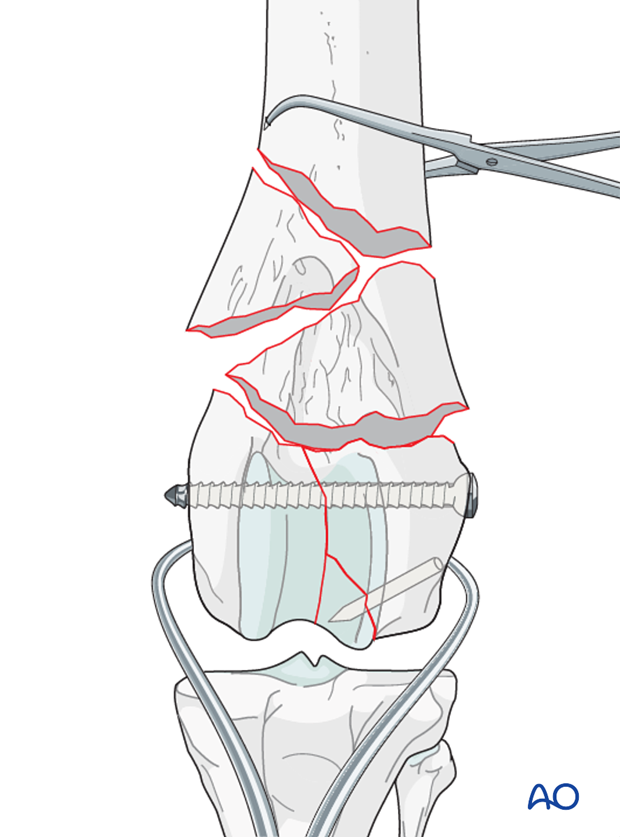
Rush pinning/Dynamic cross pinning
The pins may be inserted using a modified Rush/dynamic cross pinning technique. In this case, the pin insertion sites start at the proximal aspect of the origin of the long digital extensor tendon, in the extensor fossa of the lateral femoral condyle.
Each pin is angled 20-30 degrees to the long axis of the femur.
Due to the anatomical differences between the canine and feline femur, this technique is easier to perform in the cat, as there is less caudal curvature in the distal femur.

As the pins are advanced they bounce off the endosteal cortex and slide up the medullary canal. Advancement of the pins stop when they reach the proximal metaphysis.
Pearl: The depth of penetration of the pin is measured using a pin of same size as a reference, by holding it outside the bone.
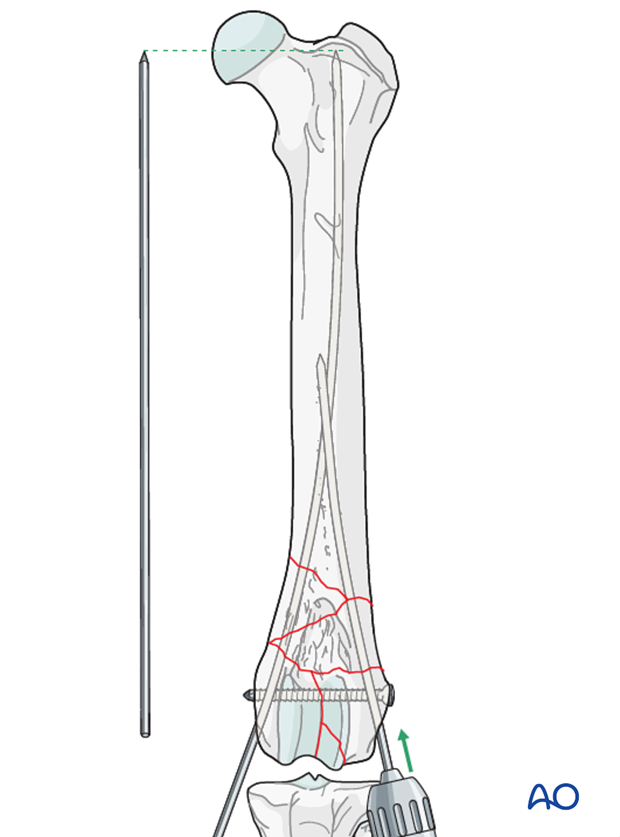
Cutting the pins
The pins can be cut flat with the bone surface, countersunk with a pin punch or bent over and then cut short.
Note: Care should be taken if the bone is very soft, as bending the pin may cause damage to the bone.
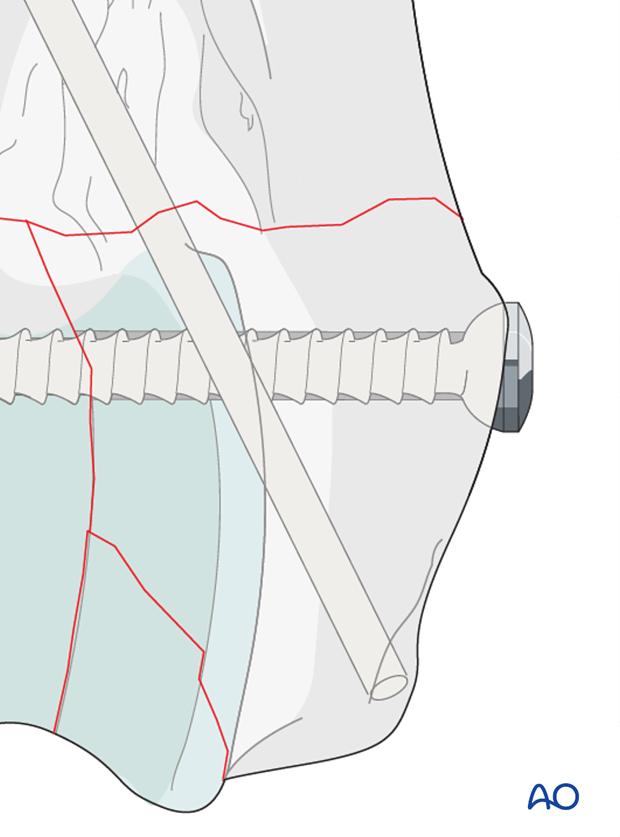
Validation of fixation
Postoperative radiographs should be taken to assess the repair.
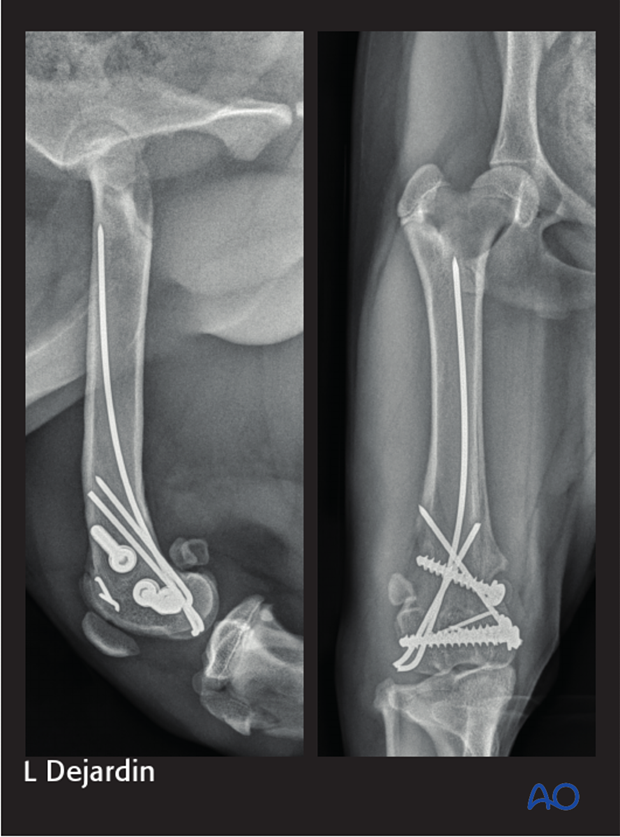
4. Aftercare
Activity restriction and controlled walking is indicated until evidence of bone healing is detected by radiographic examinations.
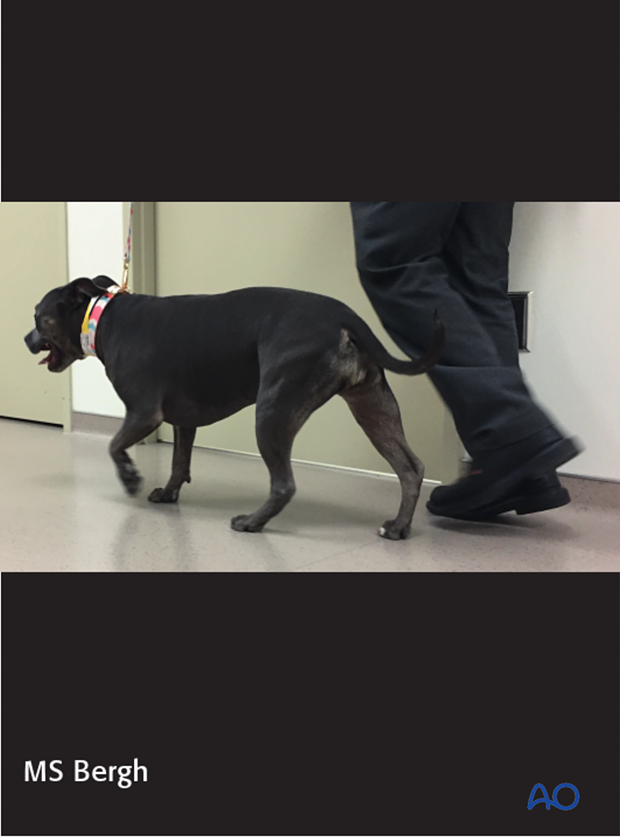
Phase 1: 1-3 day after surgery
The aim is to reduce the edema, inflammation and pain using anti-inflammatory and analgesic medications.
Passive range of motion of the hip and stifle joint can be initiated to promote mobility and joint health.
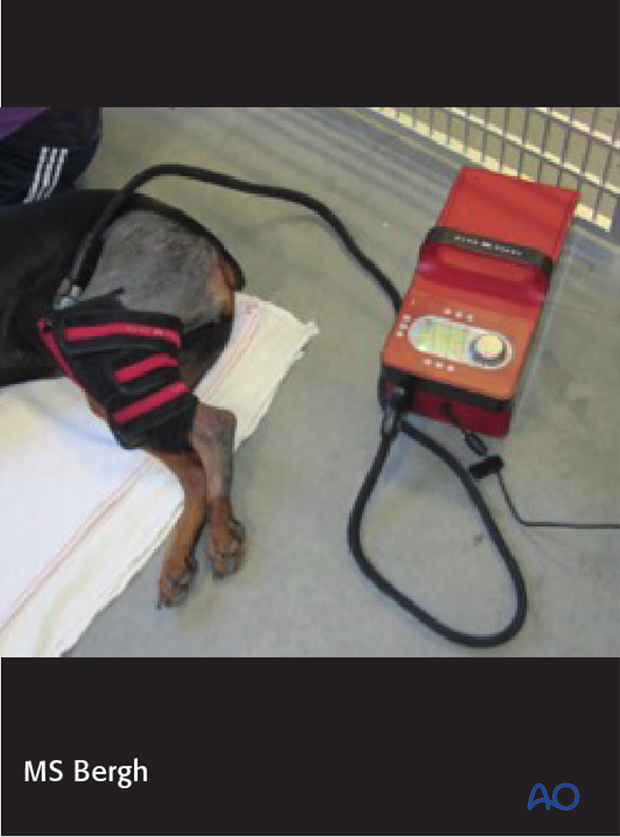
Phase 2: 4-10 days after surgery
The aim is to resolve the hematoma, edema and control pain, and prevent muscle contracture.
Anti-inflammatory and analgesic medications are still needed. Rehabilitation and integrative medical therapies can be used.
Special attention should be given to patients less than 1 year of age with a femoral fracture, as they are at risk for developing quadriceps contracture. Early controlled activity and passive range of motion is strongly recommended to help prevent this complication.
If the patient is not starting to use the limb within few days after surgery, a careful evaluation is recommended.
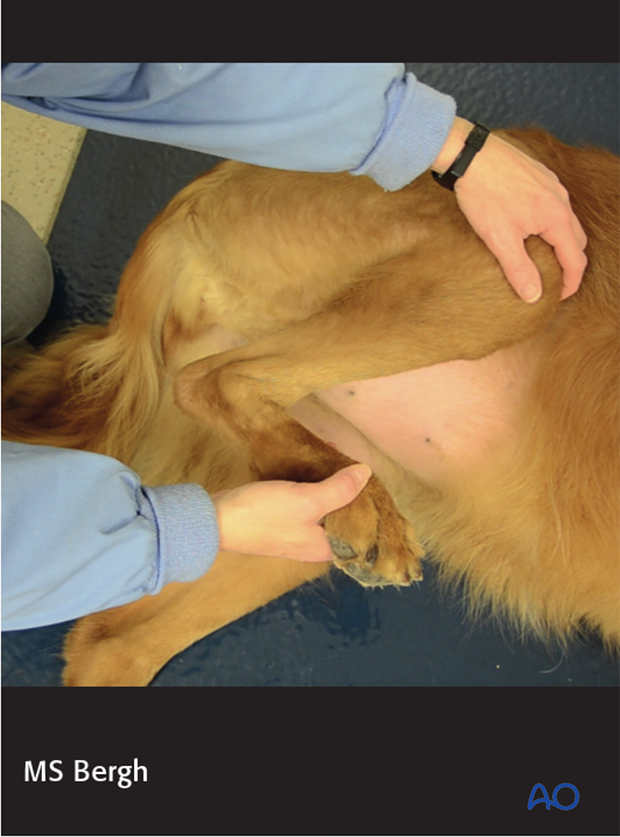
Phase 3: 10 days-8 weeks after surgery
Rehabilitation therapy is continued.
10-14 days after surgery the sutures are removed.
Radiographic assessment is performed every 4-8 weeks until bone healing is confirmed.
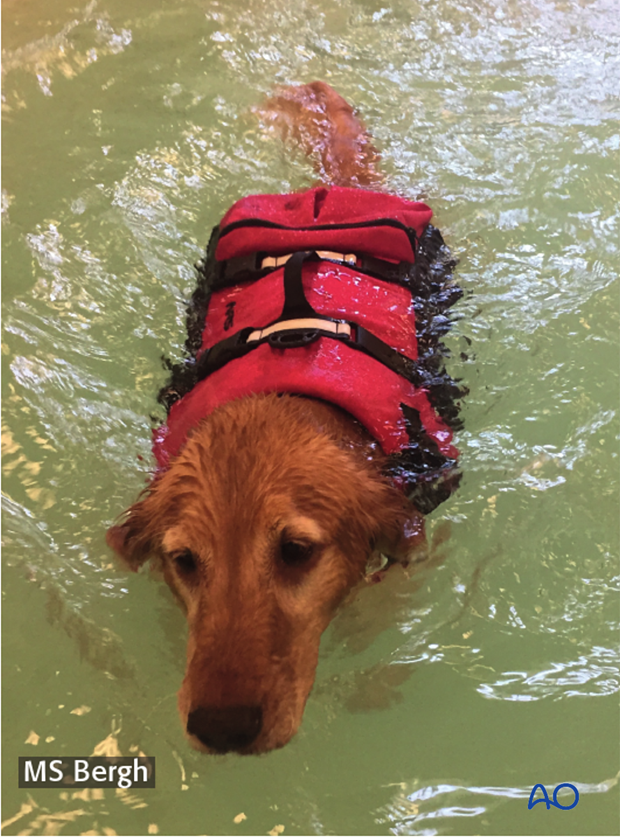
Implant removal
Implants may be removed if there is irritation or infection present, however if they are not causing problems for the patient, there is no need for implant removal.
